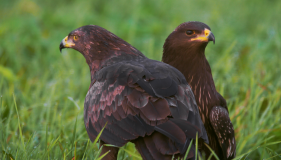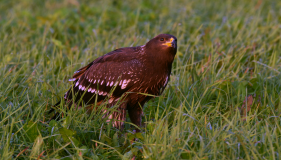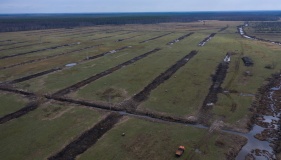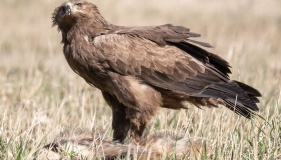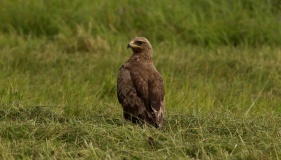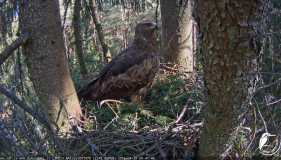This year LFN follows seven Latvian descent Great bitterns equipeed with transmitters. The birds left Latvian last october and november and went to wintering grounds in many places in the whole world. Most of the bird found their wintering grounds in countries that are well know wintering places for Great bitterns, for example, Poland and Denmark. One of the birds already once returned to Latvia, Pape lake, but departed back to Poland. The other birds are still in the wintering grounds.
The biggest discovery of this year was a Great bittern that from Kandava region that left Latvia at the end of October, crossed Poland and followed the way to South. After crossing the Meditarian see it reached Africa, crossed Sahara and on 19 November reached Mali river in Niger. The total lenght of the flight was around 6800 kilometers. This is the first know case when a Great bittern from Latvia has reached wintering grounds so far away from home country.
The other species that is in the center of attention of LFN is Lesser spotted eagle. The experts are following Estonian lesser spotted eagles that are equipped with transmitters and have observed that birds nesting in our areal and wintering in Africa have started their way back to nesting places. Lesser spotted eagle migrate to South of Africa and the length of their journey is about 16 000 km. They will return to nesting places in Latvia in the first part of april where they will start accomodating in the existing nests. Latvia is a very special territory for Lesser spotted eagles – 45% of EU Lesser spotted eagles live here and that makes Latvia one of the most significant countries for Lesser spotted eagles. Therefore it is especially important to ensure protection of the bird in Latvia.
Last year LFN started an ambitous project for Lesser spotted eagle conservation arrangments in Latvia. Up to know 110 new Lesser spotted eagle nests have been discovered. The experts also found out that 10% of the nests are affected by forestry – they are location in areas marked for cutting or in a near proximity of the nests there had been tree cutting in the last year. Also there had been cases when the nest tree has been cut.


